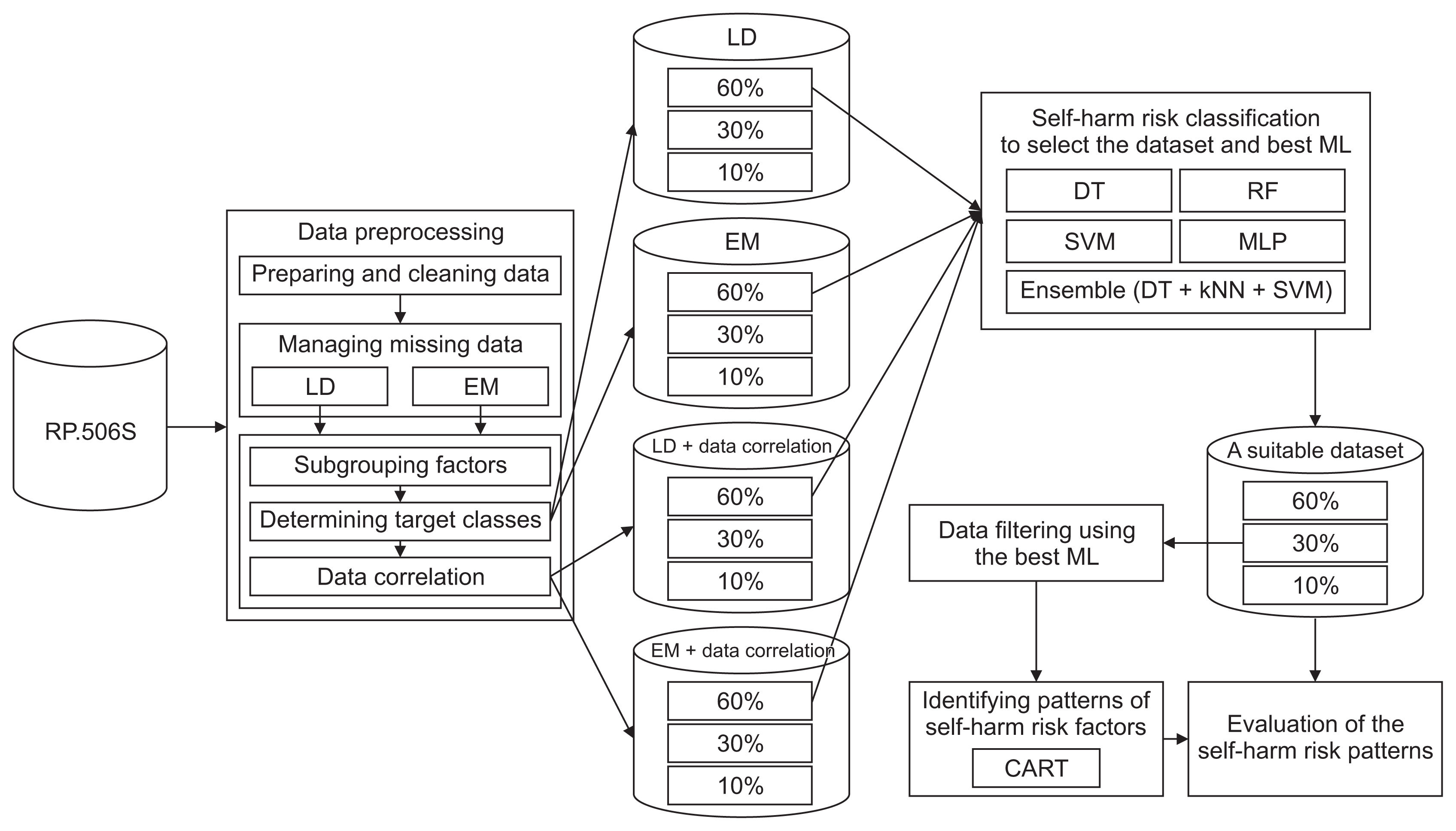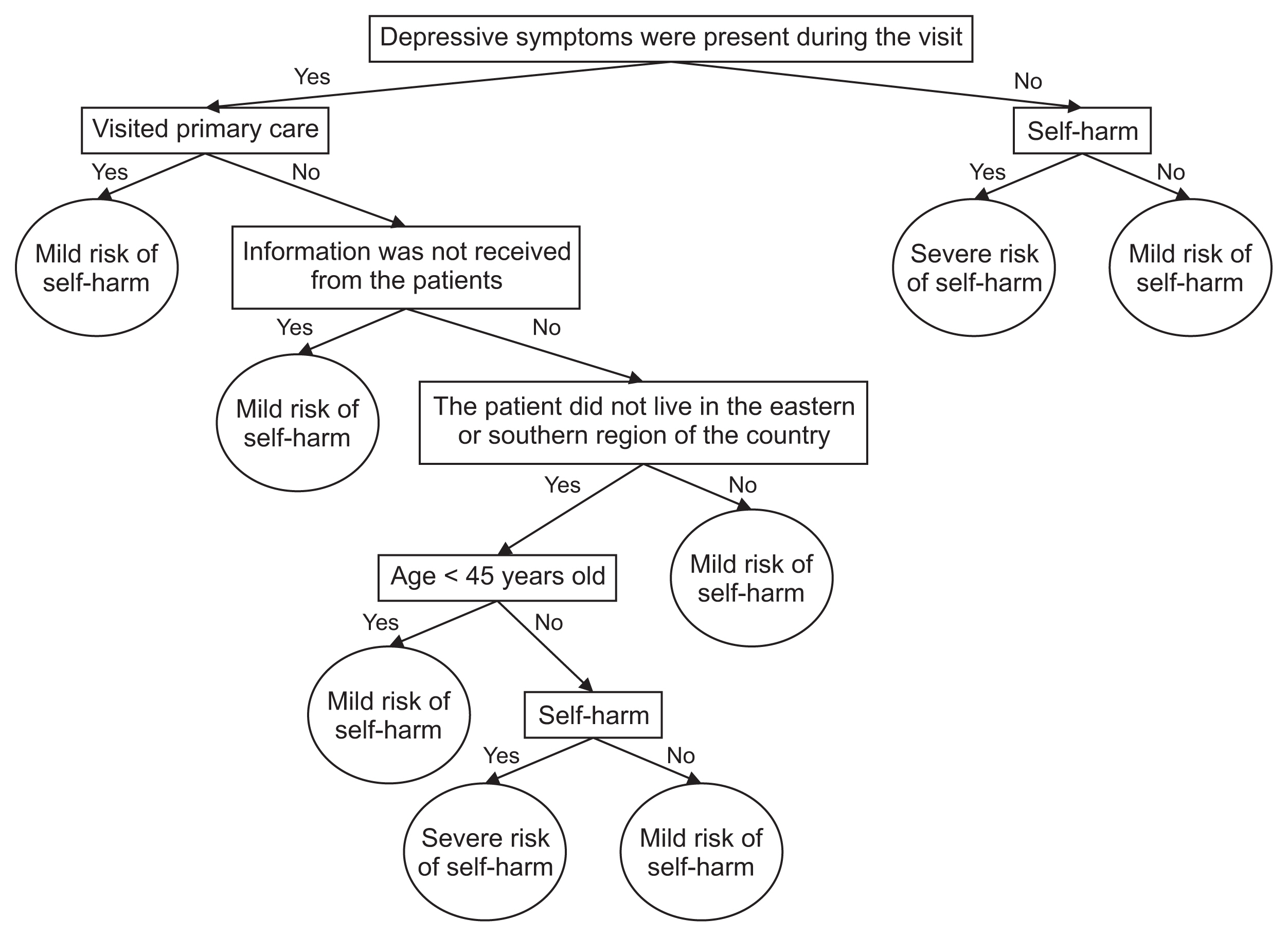7. Boonkwang K, Kasemvilas S, Kaewhao S, Youdkang O. A comparison of data mining techniques for suicide attempt characteristics mapping and prediction. Proceedings of 2018 International Seminar on Application for Technology of Information and Communication; 2018 Sep 21–22. Semarang, Indonesia; p. 488-93.
https://doi.org/10.1109/ISEMANTIC.2018.8549835

15. Wang Y, Sun K, Liu Z, Chen G, Jia Y, Zhong S, et al. Classification of unmedicated bipolar disorder using whole-brain functional activity and connectivity: a radiomics analysis. Cereb Cortex 2020 30(3):1117-28.
https://doi.org/10.1093/cercor/bhz152


16. Achalia R, Sinha A, Jacob A, Achalia G, Kaginalkar V, Venkatasubramanian G, et al. A proof of concept machine learning analysis using multimodal neuroimaging and neurocognitive measures as predictive biomarker in bipolar disorder. Asian J Psychiatr 2020 50:101984.
https://doi.org/10.1016/j.ajp.2020.101984


17. Santos-Mayo L, San-Jose-Revuelta LM, Arribas JI. A computer-aided diagnosis system with EEG based on the P3b wave during an auditory odd-ball task in schizophrenia. IEEE Trans Biomed Eng 2017 64(2):395-407.
https://doi.org/10.1109/tbme.2016.2558824


18. Lin GM, Nagamine M, Yang SN, Tai YM, Lin C, Sato H. Machine learning based suicide ideation prediction for military personnel. IEEE J Biomed Health Inform 2020 24(7):1907-16.
https://doi.org/10.1109/jbhi.2020.2988393


19. Choi SB, Lee W, Yoon JH, Won JU, Kim DW. Ten-year prediction of suicide death using Cox regression and machine learning in a nationwide retrospective cohort study in South Korea. J Affect Disord 2018 231:8-14.
https://doi.org/10.1016/j.jad.2018.01.019


21. Bin-Hezam R, Ward TE. A machine learning approach towards detecting dementia based on its modifiable risk factors. Int J Adv Comput Sci Appl 2019;10(8):1-9.

23. Miche M, Studerus E, Meyer AH, Gloster AT, Beesdo-Baum K, Wittchen HU, et al. Prospective prediction of suicide attempts in community adolescents and young adults, using regression methods and machine learning. J Affect Disord 2020 265:570-8.
https://doi.org/10.1016/j.jad.2019.11.093


24. Shen Y, Zhang W, Chan BS, Zhang Y, Meng F, Kennon EA, et al. Detecting risk of suicide attempts among Chinese medical college students using a machine learning algorithm. J Affect Disord 2020 273:18-23.
https://doi.org/10.1016/j.jad.2020.04.057


25. Alimardani F, Cho JH, Boostani R, Hwang HJ. Classification of bipolar disorder and schizophrenia using steady-state visual evoked potential based features. IEEE Access 2018 6:40379-88.
https://doi.org/10.1109/ACCESS.2018.2854555

26. Çolakoglu N, Akkaya B. Comparison of multi-class classification algorithms on early diagnosis of heart diseases. Proceedings of tge y-BIS Conference 2019: Recent Advances in Data Science and Business Analytics; 2019 Sep 25–28. Istanbul, Turkey; p. 162-71.

28. Onishi K. Risk factors and social background associated with suicide in Japan: a review. Jpn Hosp 2015;(34):35-50.













